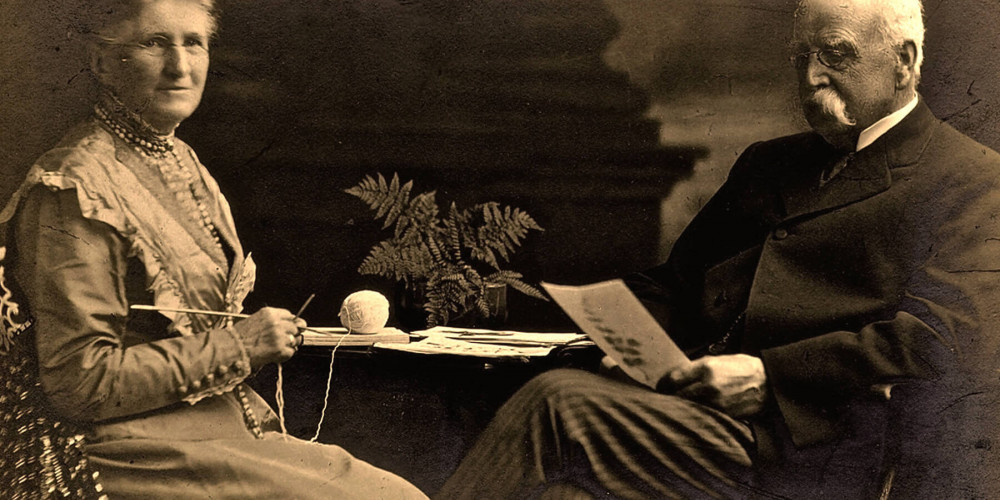KIT Blog
Wellesley, Alice and the Pim Sisters
Some of you will have already heard the story how The Leprosy Mission started. It’s a timeless drama—Christlike compassion inspiring everyday people to respond to a great need. Often it’s just a story that starts and ends with Wellesley Bailey (top-right). But the story is actually bigger than that. There were many people that helped make The Leprosy Mission what it is today. One of these people was Dr Morrison. Alice Grahame was another (top-left). Charlotte Pim, and her two sisters Isabella and Jane, were also central. But we’ll get to them a bit later.
…it was not the ulcers, the smell, the collapsed noses or the misshapen limbs that most struck Wellesley. It was the despair pressed upon their faces.
Wellesley Bailey had several careers in far-flung places. In 1869, Wellesley found himself teaching at a mission school in Ambala, India. The school principal, Dr Morrison, invited him on his regular visit to a small leprosy asylum. To Wellesley’s surprise, the community had settled on the other side of the road from his house. Three rows of huts stood under a handful of trees. The people living there were in various stages of leprosy. But it was not the ulcers, the smell, the collapsed noses or the misshapen limbs that most struck Wellesley. It was the despair pressed upon their faces. People affected by leprosy believed that the gods had cursed them—a belief still widespread today. To address this despair, Bailey offered the “consolation of the Gospel”. Whereas their religion rejected them, Wellesley could offer acceptance, community and religious inclusiveness. Wellesley wasn’t perfect. I’m sure he would have said as much himself. Some of his beliefs we would rightly find uncomfortable today. But his concern for people affected by leprosy was holistic and integrated. He would always insist on the provision of “good living rooms, good food, clothing, medical attendance, sanitary regulations…”. It was that day at the Ambala leprosy asylum that would change Wellesley’s focus forever.
Wellesley could offer acceptance, community and religious inclusiveness.
Dr Morrison fell ill the following season. He passed the station work onto Wellesley, who would regularly visit the asylum over the next five years. Dr Morrison’s commitment to regular prayer must have deeply impressed Wellesley. In later years, Wellesley would return to prayer on all matters of the Mission. In one of his final speeches, Wellesley famously remarked: “The Mission was born and cradled in prayer, it has been brought up in prayer, it has been nourished in prayer, and prayer has been at the bottom of its success since the first moments of its life.”
Alice Grahame was a young Irish woman. She was also a childhood friend of Wellesley. They had been writing romantically by sea-mail for many months. It was in this correspondence that they would became engaged. In these letters, Wellesley Bailey also shared stories from the Ambala leprosy asylum—stories which Alice would pass on to her friends.
Leaving her homeland in 1871 she went to meet Wellesley in India. They married in Bombay of that year, and would continue to visit the people of the Ambala Leprosy asylum together. By 1873, Alice’s health was failing. Upon their doctor’s orders, they returned to Ireland.
Isabella, Charlotte and Jane Pim were childhood friends of Alice still living in Dublin. Intrigued by the stories Alice had shared, Charlotte invited the couple to their home in Monkstown to speak of their work in India. Following that first meeting, a more public address was arranged. It was held at the Monkstown Quaker Meeting House in September 1874.
“…though I have been called the founder of the Mission, I have always thought that Miss Charlotte Pim equally deserved the title.”
—Wellesley Bailey
After this meeting, Wellesley writes that one of the sisters (most likely Charlotte) said: “We have been thinking that we would like to help in this work, but we cannot promise very much in the way of money, still we wish to do something, and consider that we could promise, or try to collect about £30 a year, if such a small sum would be of any real help to you.” The Pim sisters were pioneers in this way–it was unusual for women of this time to inspire others to give. Their first fundraising pledge launched the “Mission to the Lepers” as a sustainable charity. Wellesley Bailey would later comment on this incident: “…though I have been called the founder of the Mission, I have always thought that Miss Charlotte Pim equally deserved the title.”
“The criterion was need; the motive was compassion; the challenge was opportunity.”
—Wellesley Bailey
With the Pim’s encouragement, Wellesley Bailey wrote down his first public address in a sixteen-page pamphlet entitled “Lepers in India”. This later became known as “The Original Beggar” or “The Penny Beggar” which avoids using the unkind language. The needs of people with leprosy received wide attention throughout Dublin. Bailey’s words stirred people to respond. There was never a test for who should and shouldn’t be beneficiaries or benefactors. Like the Samaritan of Jesus’ parable: there was only a response to an urgent need. Miller writes in his founding story of The Leprosy Mission (1965) ‘An Inn Called Welcome’: “The criterion was need; the motive was compassion; the challenge was opportunity.”
Charlotte’s pledge of £30 a year, had already seen £600 raised by the end of the following year. In 1875, Alice had recovered and the Baileys had returned to India. Although employed as a lay-missionary for the Church of Scotland, Wellesley continued to serve people affected by leprosy. That year he would also publish a series of Occasional Papers to keep supporters in Scotland and Ireland informed. The Pim sisters and their helpers processed gifts and correspondence. But there in Ireland, the situation seemed chaotic. Charlotte requested that the Bailey’s return to Dublin to formalise their Mission.
In 1878, with the Bailey’s on a month’s leave from India, “The Mission to Lepers” was formalised. A board was appointed, with Charlotte Pim as Secretary. By 1882, Wellesley was no longer employed as a Church of Scotland missionary. He was then able to devote himself to The Leprosy Mission, alongside his wife and friends, the Pim sisters, for the rest of his life.
In a way, The Leprosy Mission hasn’t changed its core operation for over a hundred years. It’s modernised it’s name a bit, but it still depends on your support—often from everyday people, like the Pim sisters, who “cannot promise very much in the way of money”. To this day, that support provides a holistic service to people affected by leprosy, inspired by the healing compassion of Jesus Christ.













